Французская ПолинезияFrench PolynesiaНа карте мира Map5–7, 13–16 сентября 2011
September Многие сюда приезжают позагорать, посмотреть на закат во время прекрасного ужина. Не будем им мешать. Many people come here to lie on the beach, enjoy some fine dining and watch the sunset. We won’t disturb them. 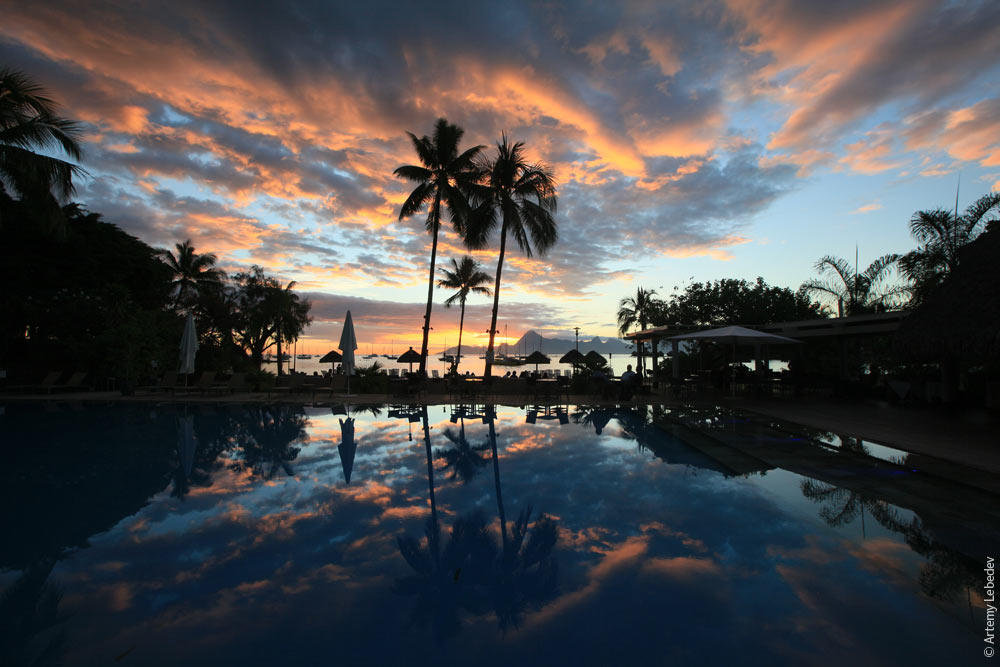 Местные предпочитают соус из ферментированной рыбы. The locals prefer fermented fish sauce. 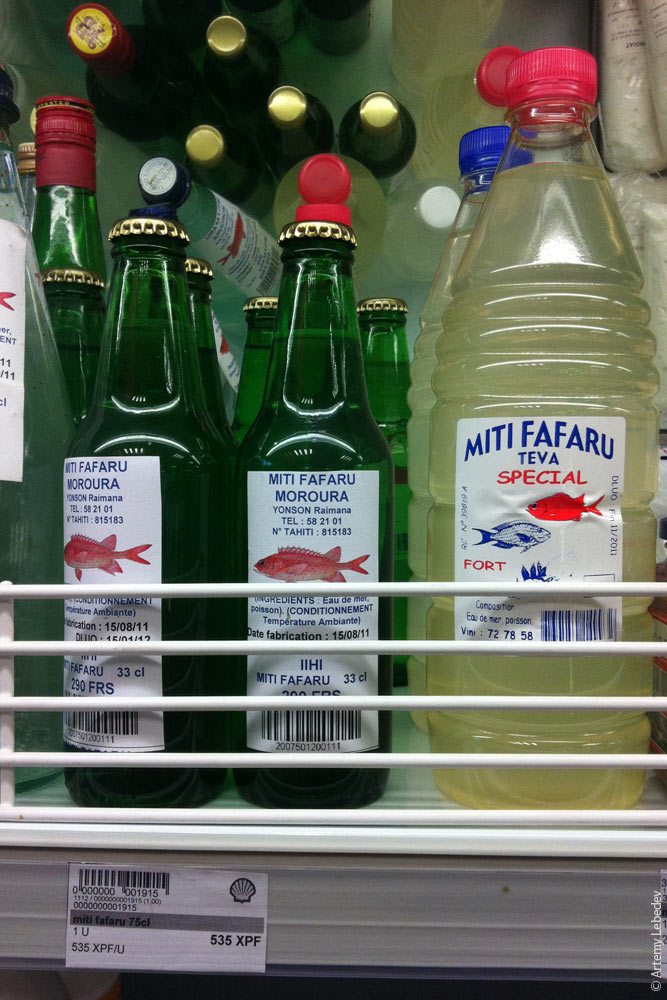 ТаитиTahitiНа карте мира MapУрна в аэропорту. A trash can at the airport. 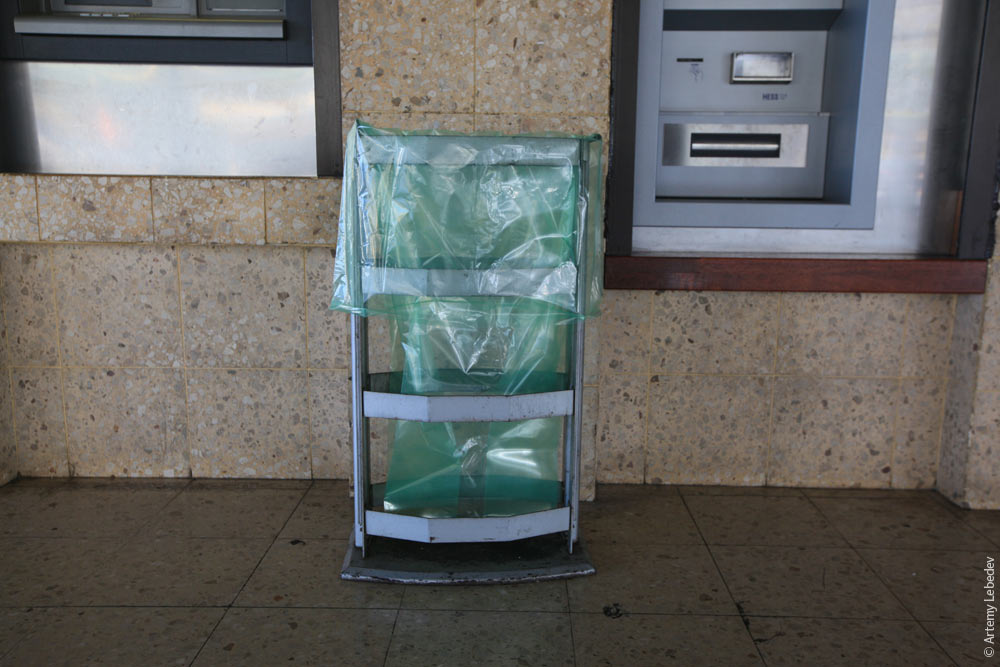 Урны по всему острову. Trash cans around the island. 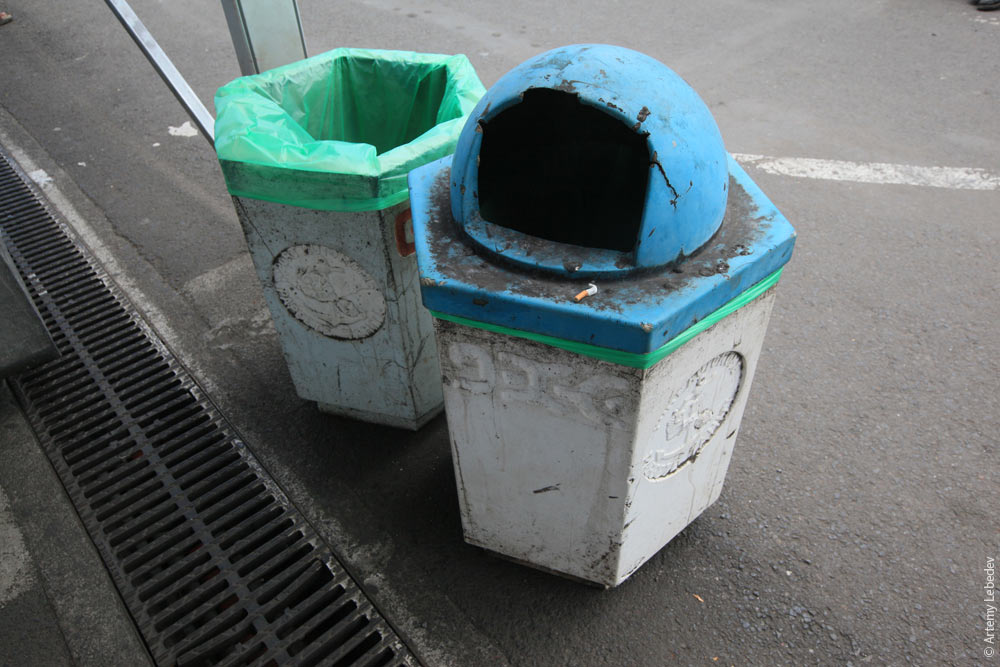 Мусорный бак мама и мусорный бак дочка. A mother-and-daughter dumpster pair. 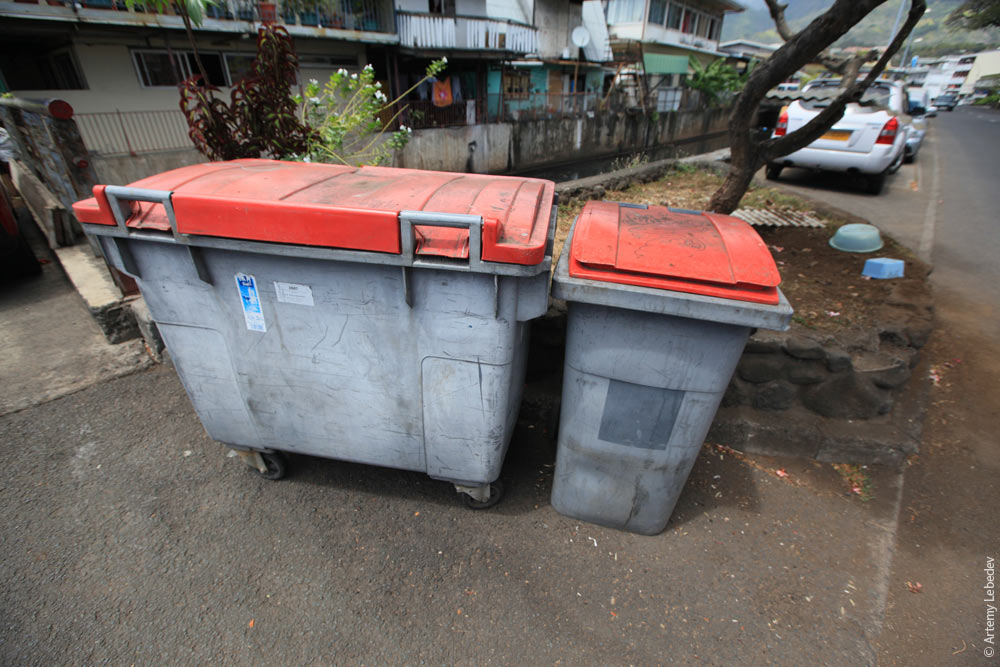 Большой придорожный мусорный контейнер, похожий на голову глупого трансформера.
A large roadside dumpster, which looks like the head of a 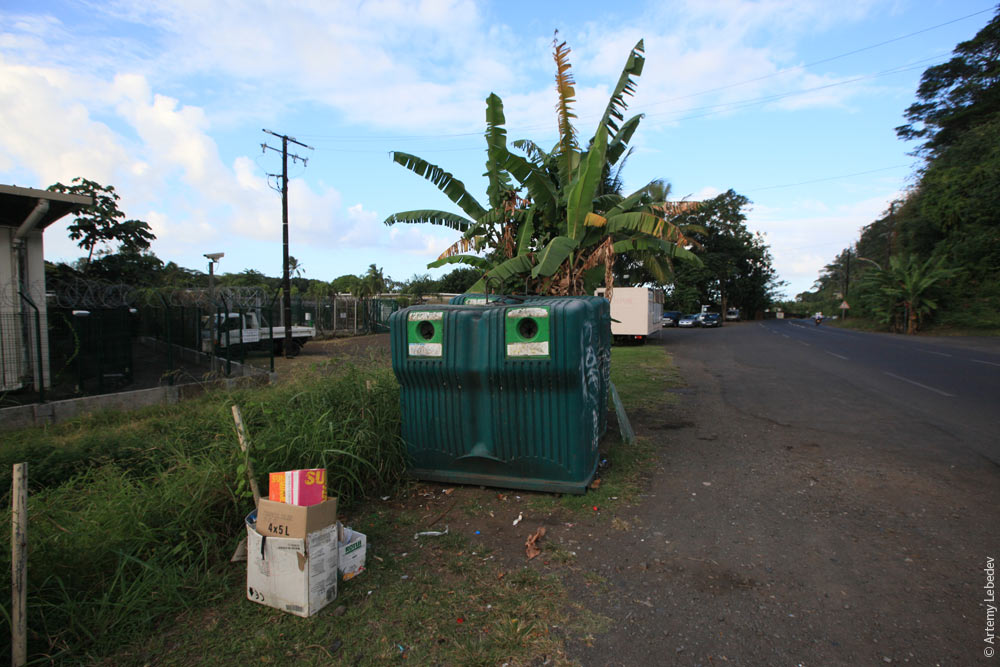 Архитектура. Architecture.  Робкое граффити. Стены расписаны такими наивными рисунками тонким маркером, как в школьных тетрадях. Some timid graffiti. The naïve wall drawings in thin marker look like something you’d see in a school notebook. 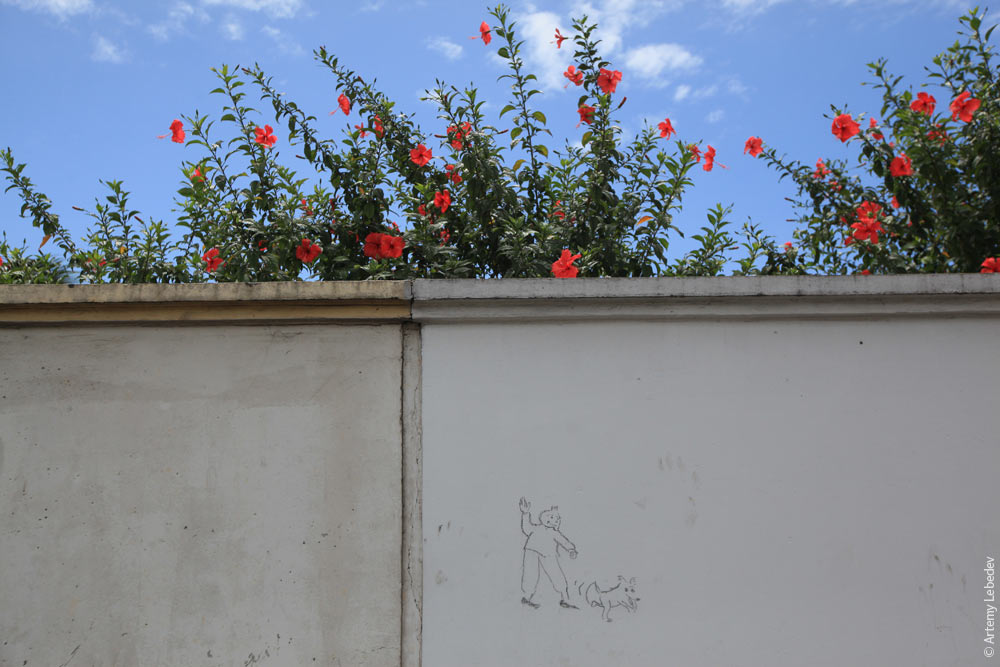 Все автобусы (на снимке — школьный автобус) украшены по периметру орнаментом. All the buses (the one in the photo is a school bus) are decorated with ornaments around the perimeter.  Вдавленный орнамент на бетонной клумбе-ограде. A recessed ornament on a concrete flowerbed/fence.  И фонарные столбы украшены орнаментом, только объемным. The lampposts are also decorated with ornaments, only relief ones. 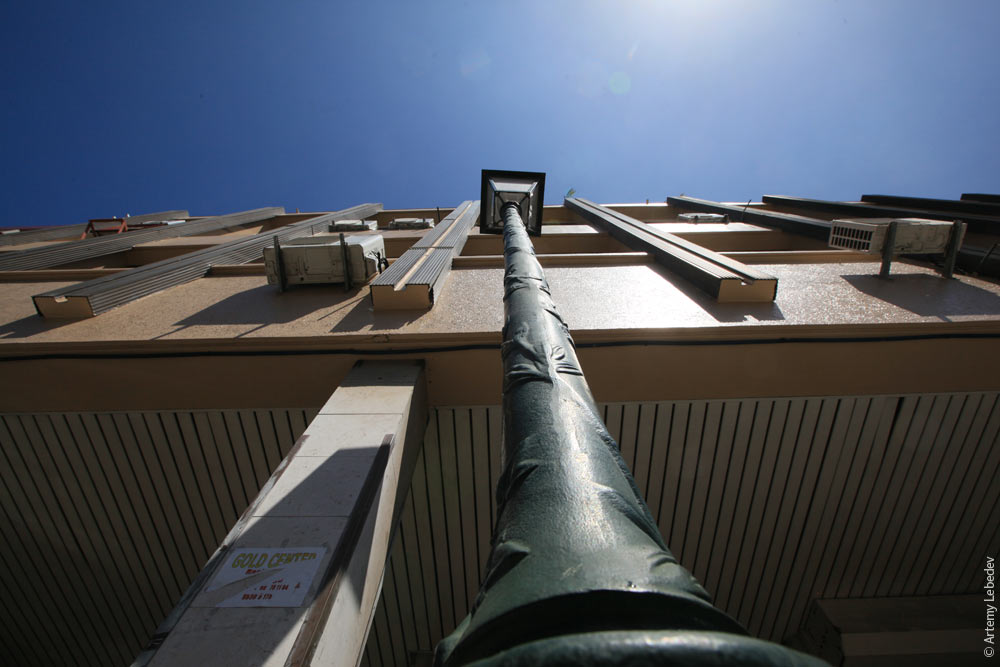 Светофор. A traffic light. 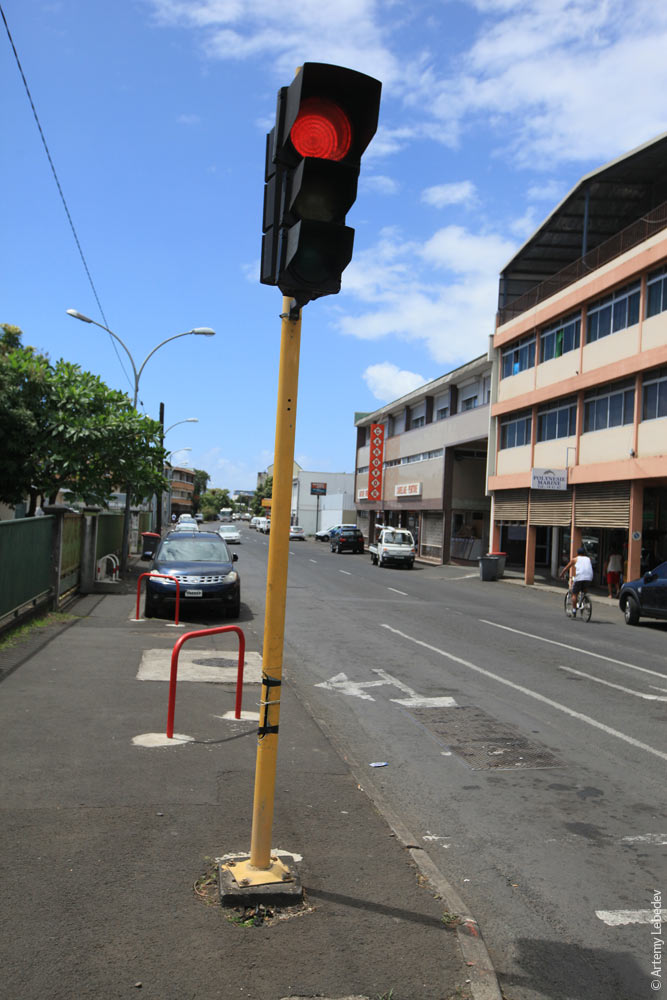 Практически все городские объекты оберегаются металлическими трубами от случайно врезающихся автомобилей. Фонарный столб защищен. Almost all municipal objects have metal pipe barriers to protect them from accidental car collisions. The lamppost is protected. 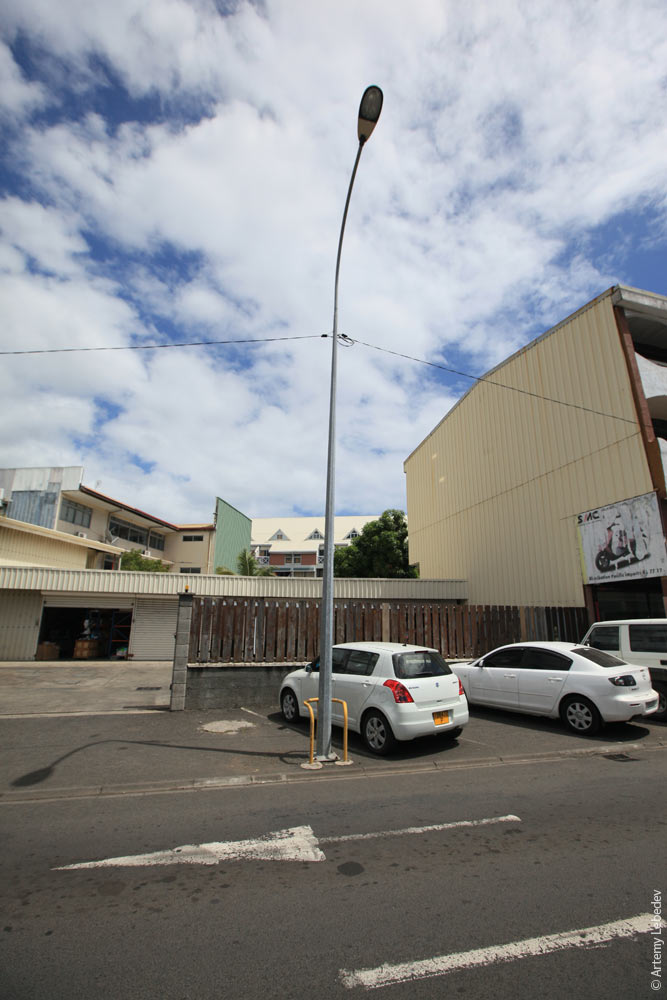 Тут любят украшать столбы веткой пальмы, завязанной вокруг ствола в косичку. Электрический шкафчик защищен. People here like to decorate poles by braiding palm leaves around them. The little electrical box is protected. 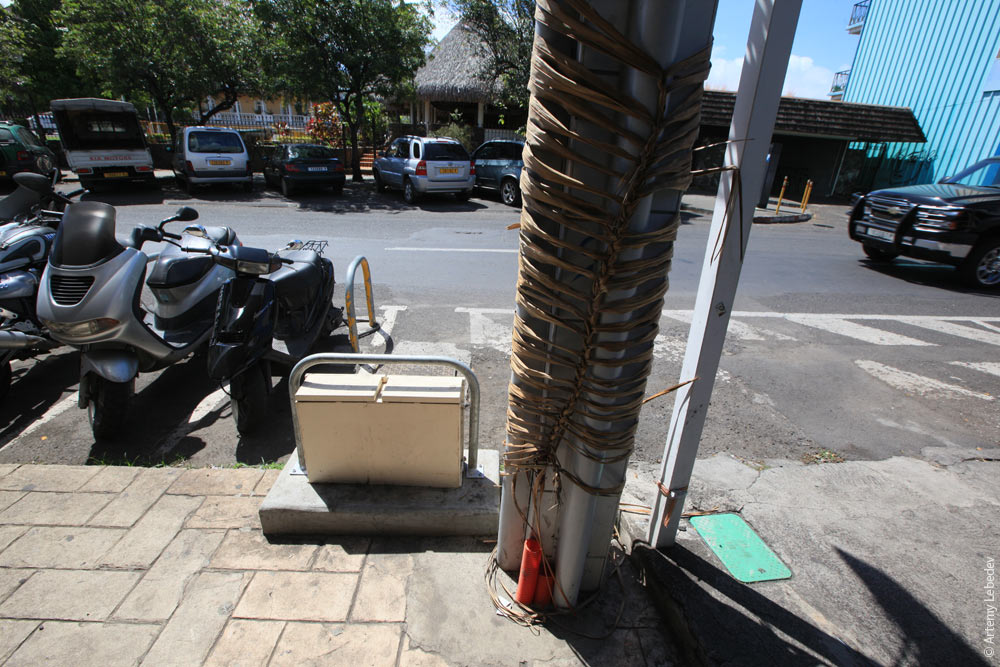 Гидрант защищен. The fire hydrant is protected. 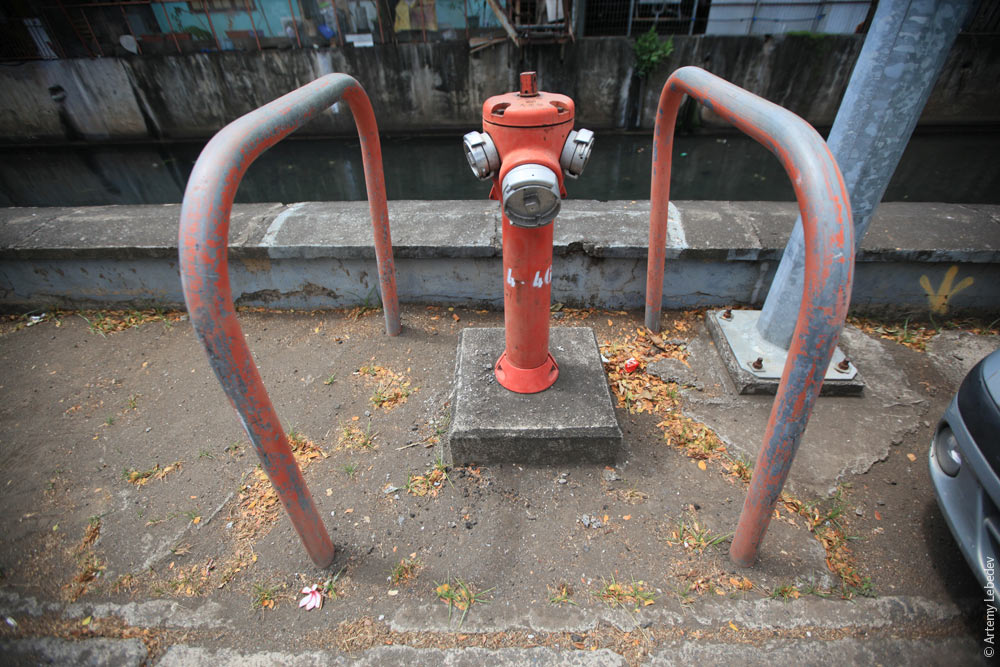 Крышка люка. A manhole cover. 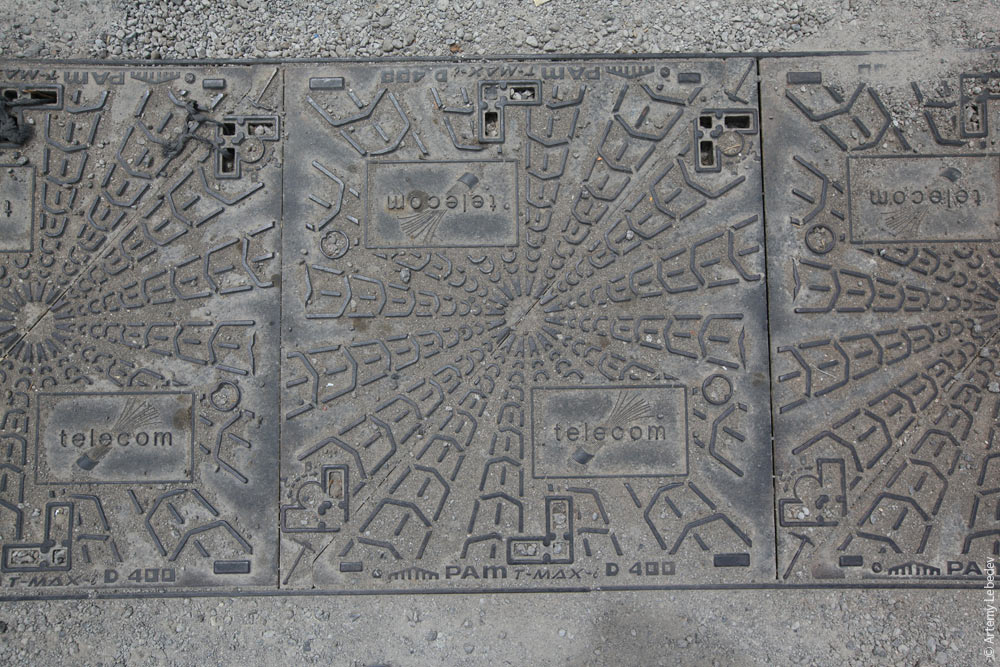 Новые таксофоны в корнях. New payphones amidst the roots. 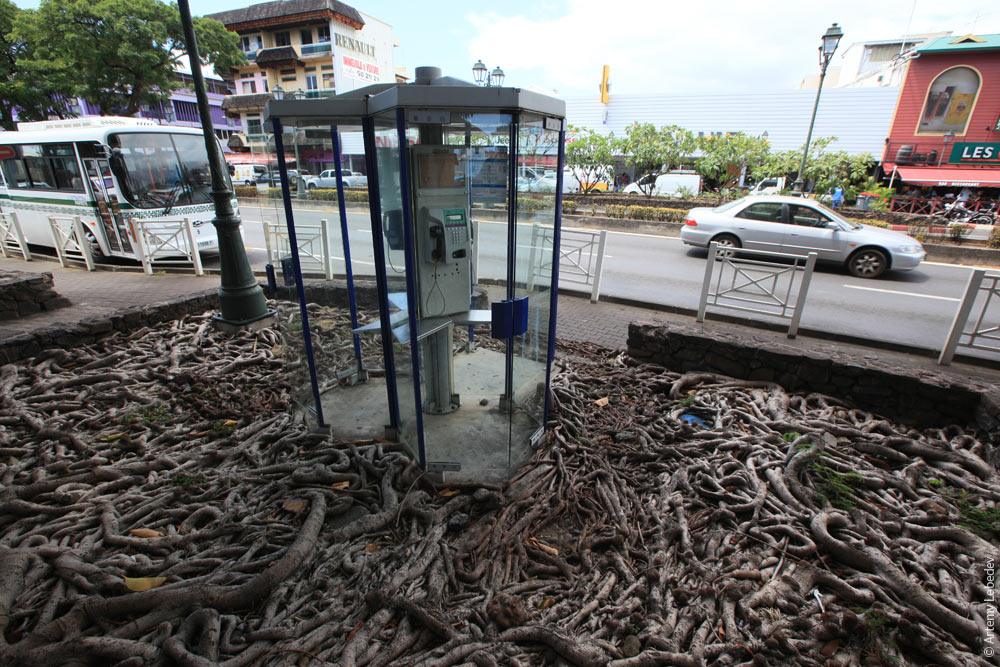 Старый таксофон. An old payphone. 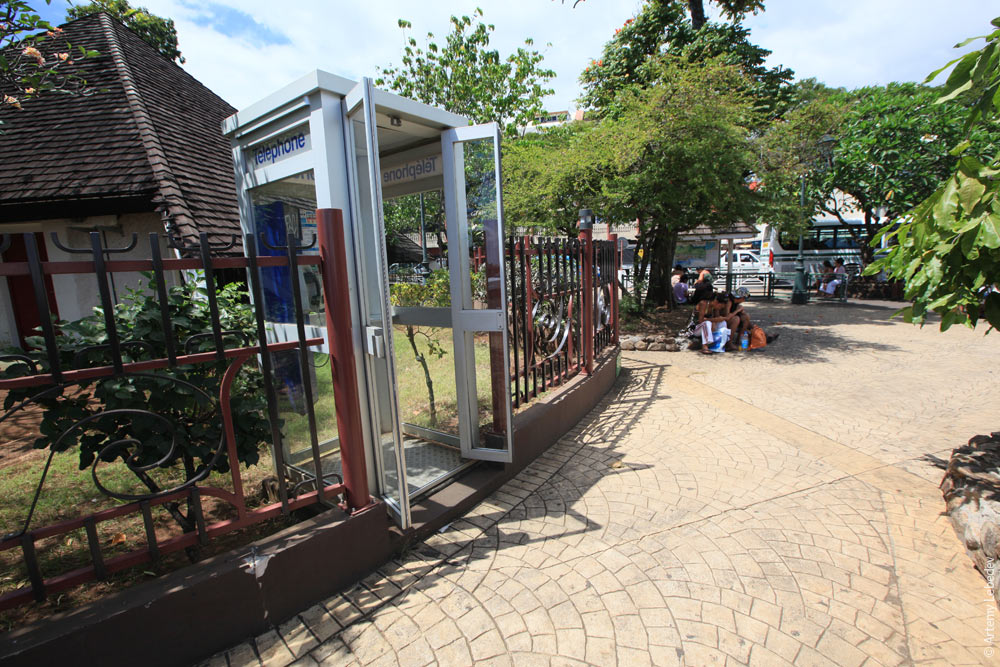
Дорожные знаки. Знак Traffic signs. The sign for Zone 3 in Papeete (the capital of Tahiti) is embellished with two gardenia buds. Gardenias follow you everywhere around the island—they’re handed out on the plane, at the airport, in hotels, and so on. It’s the local symbol, sort of like the lei (orchid garland) in Hawaii. 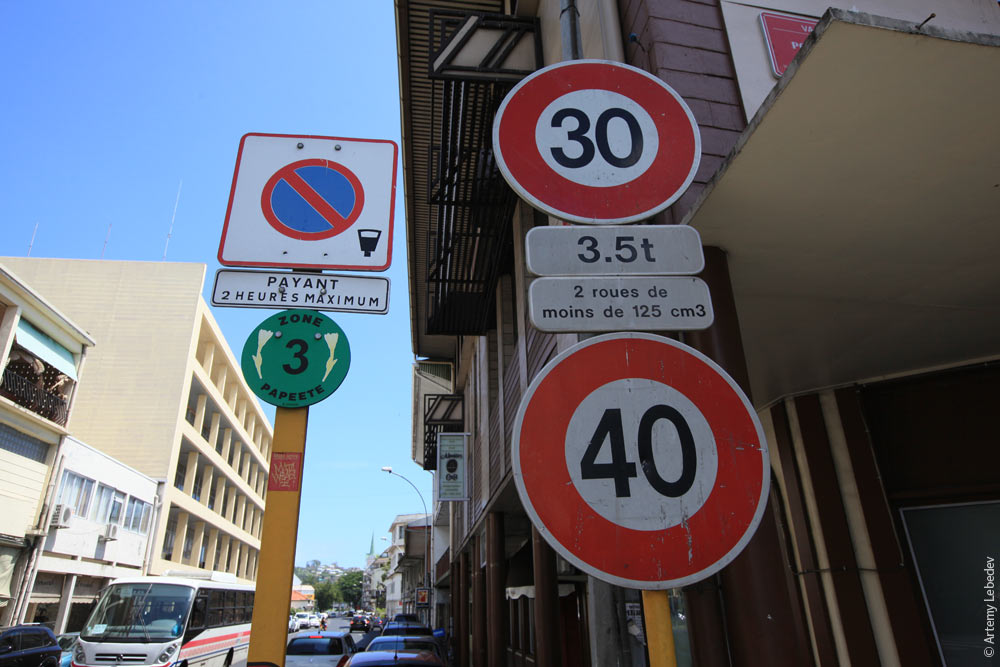 Один из лучших способов получить представление о дорожных знаках в стране — посмотреть на рекламу автошколы. Как видим, ничего особенного тут нет. One of the best ways to get an idea of what traffic signs in any given country look like is to glance at a driving school ad. As we can see, there’s nothing particularly special here. 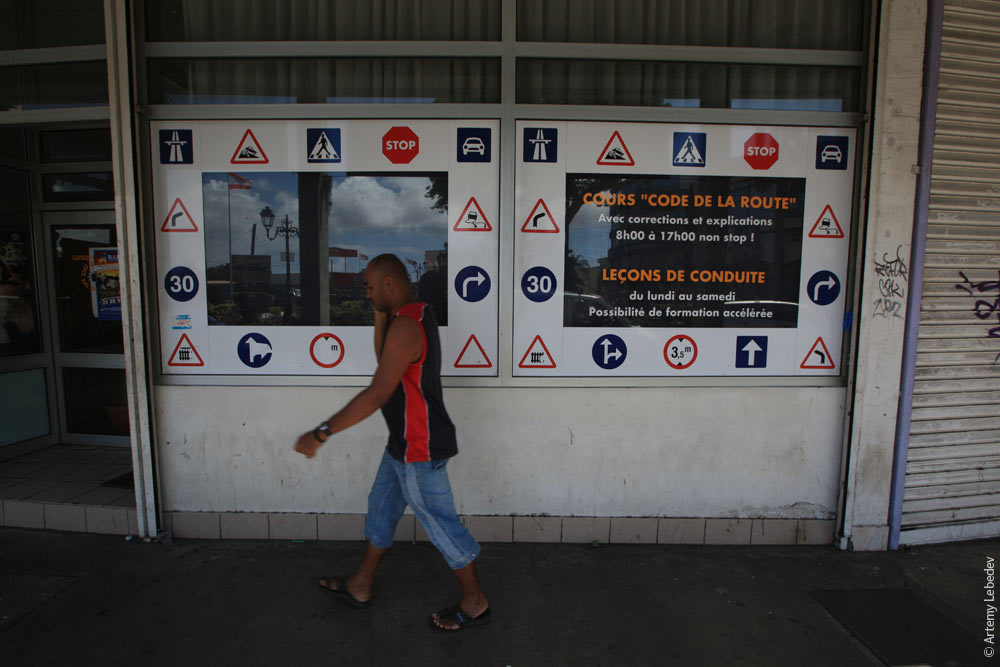 Остров можно объехать по периметру за пару часов. Ничего особенного там нет. It only takes a couple of hours to drive around the perimeter of the island. There’s nothing particularly special there. 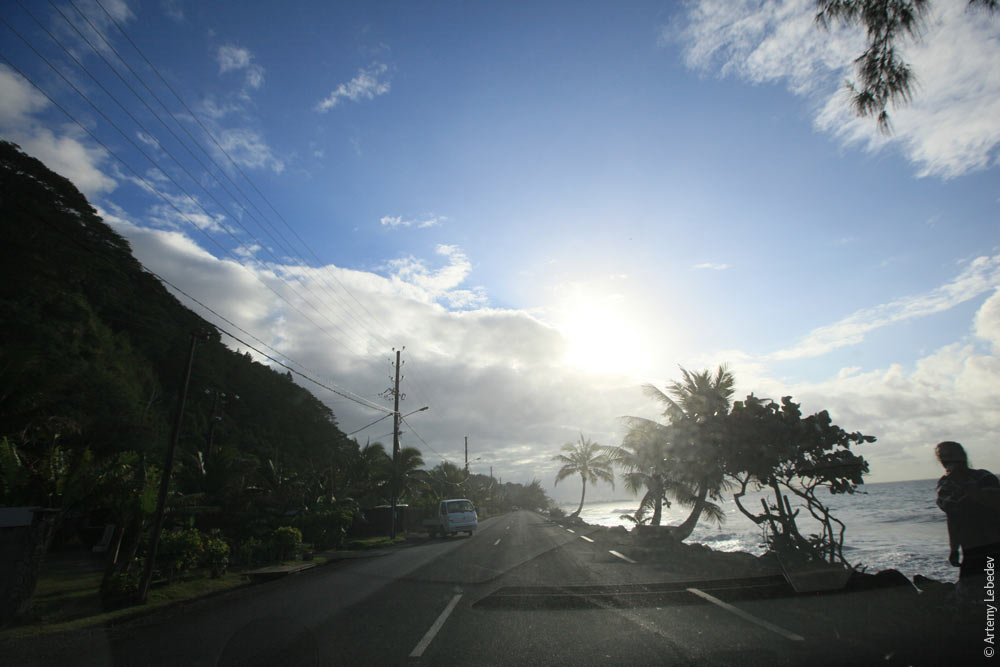 Если не считать нашего старого знакомого — километрового столба с красным верхом, признака французского колониального влияния (как в Лаосе, Вьетнаме и Камбодже, Тунисе). Unless you count our old friend—the kilometer marker with a red top, a sign of French colonial influence (like in Laos, Vietnam, as well as Cambodia, Tunisia). 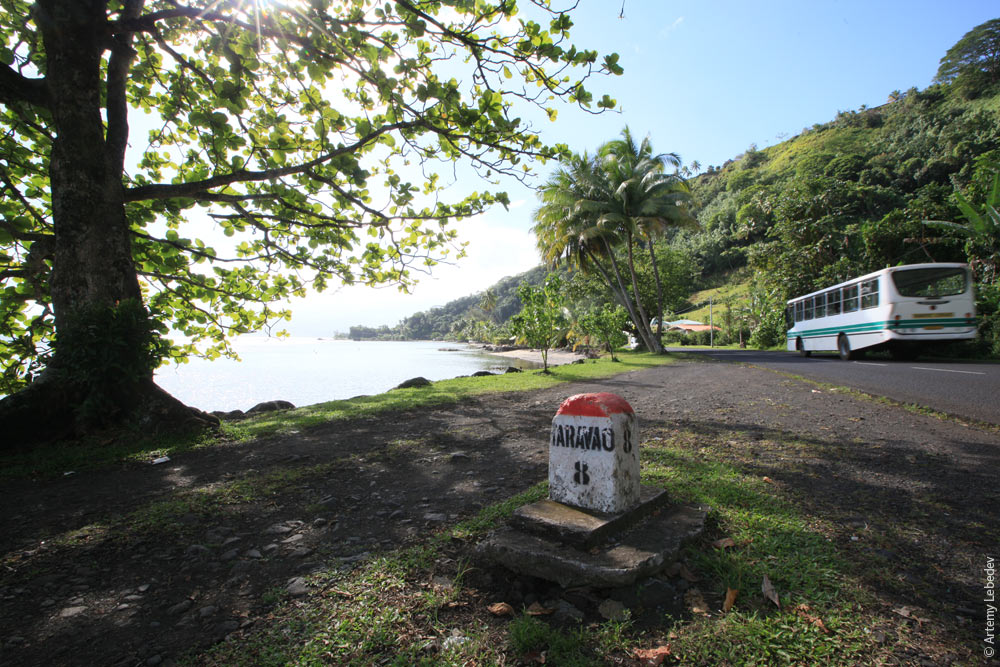 Единственная необычная деталь во Французской Полинезии — разметка (сплошная с периодически появляющимися четырьмя квадратиками справа и слева), разрешающая обгон медленноидущего транспорта на участке, где обгон запрещен. There’s only one unusual detail in French Polynesia: traffic lane markings (solid lines with occasional sets of four squares on the right and left) which permit passing slow vehicles on sections of the road where passing is otherwise forbidden. 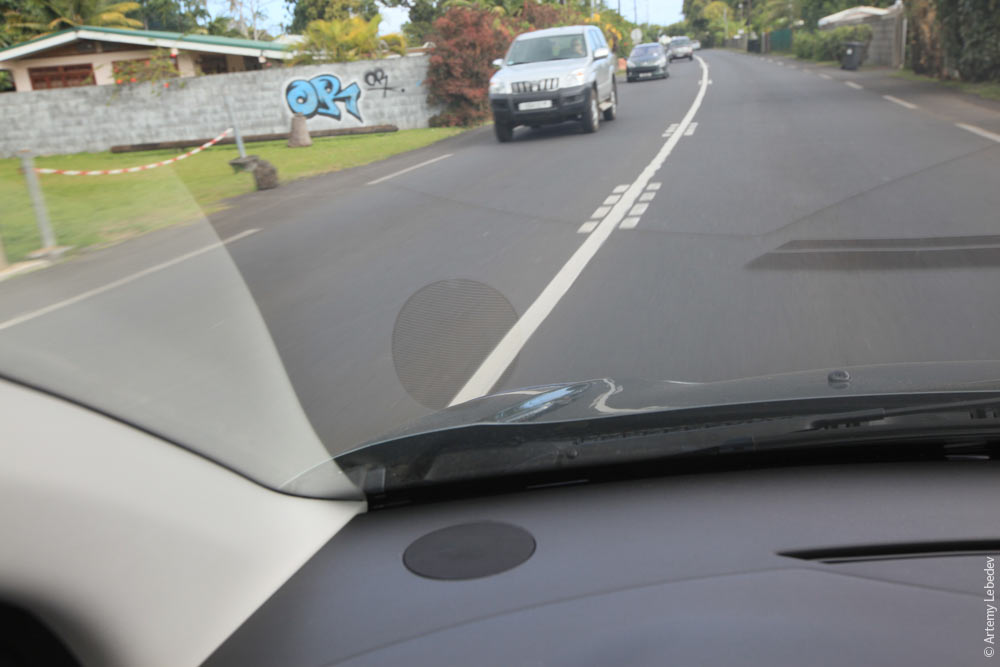 Обычный почтовый ящик. A regular post box. 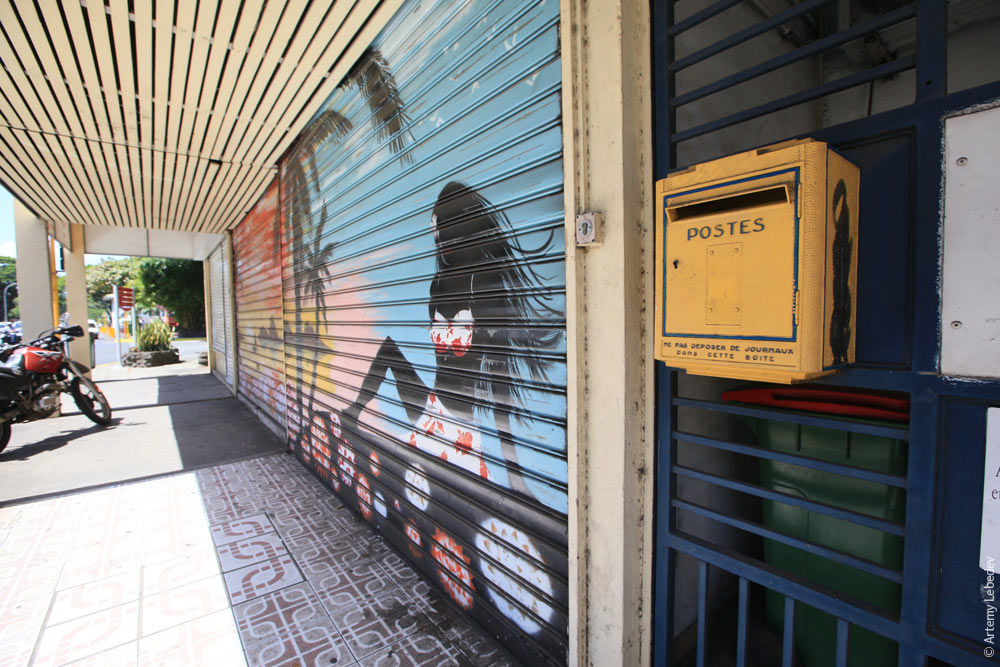 Редкая модель — с логотипом местной почты и инициалами Республики Франция. A rare model with the logo of the local post and the initials of the French Republic. 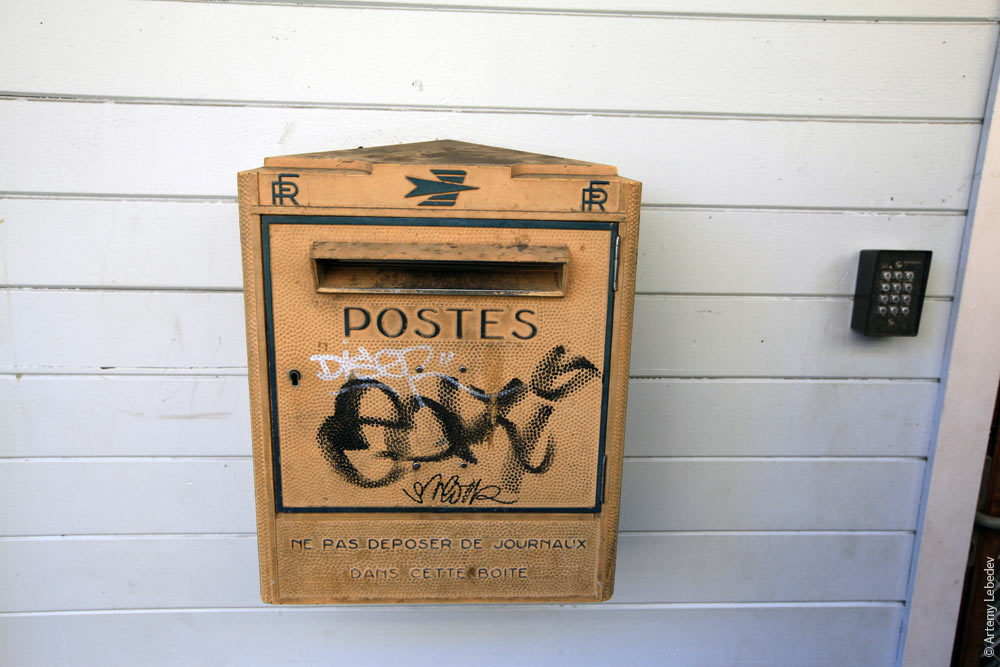 Совсем редкая модель — для нереальных объемов почты. An extremely rare model—for monstrous volumes of mail.  Витрина кафешки для местных. The window display of a café for locals. 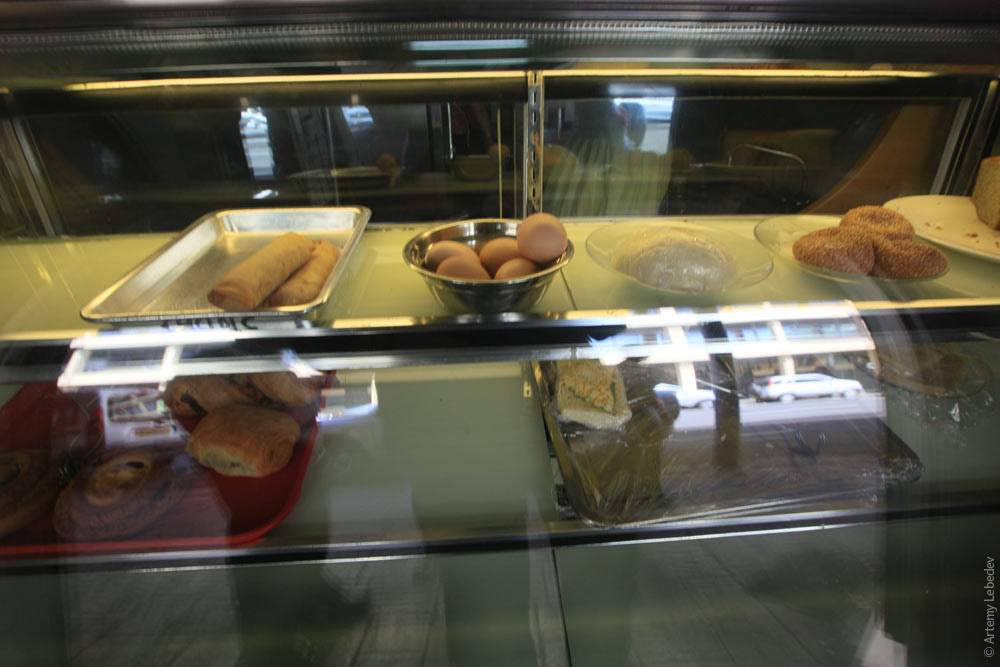 Уличная торговля преднарезанными арбузами и дынями. A street stand with sliced watermelons and melons for sale. 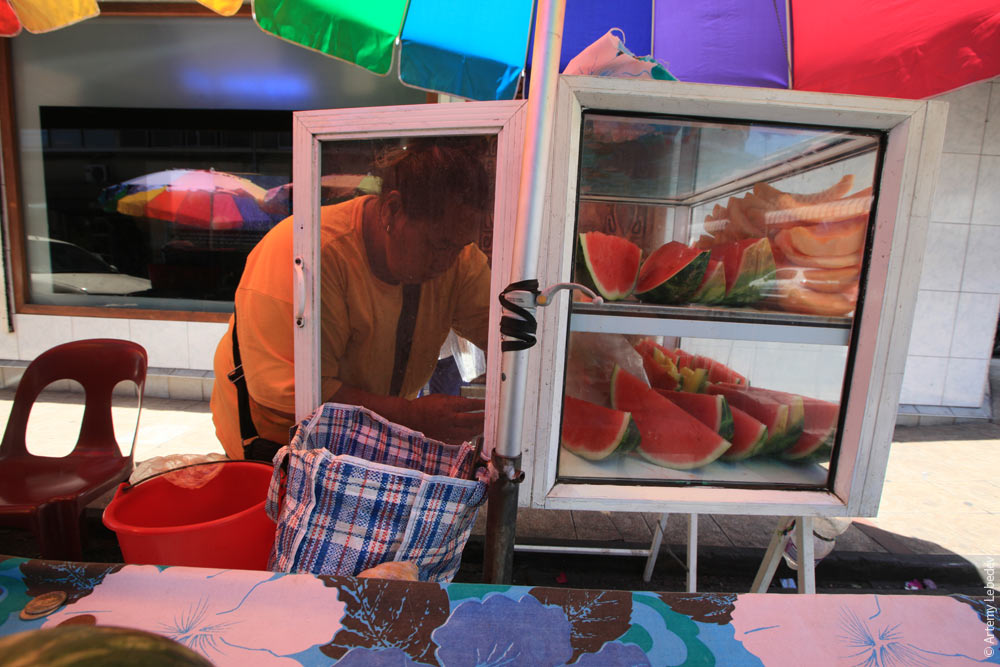 МуреаMooreaЭто такой остров через дорогу от Таити. Туда за полчаса ходит паром с немытыми окнами. Moorea is this island across the street from Tahiti. A ferry with dirty windows will get you there in half an hour. 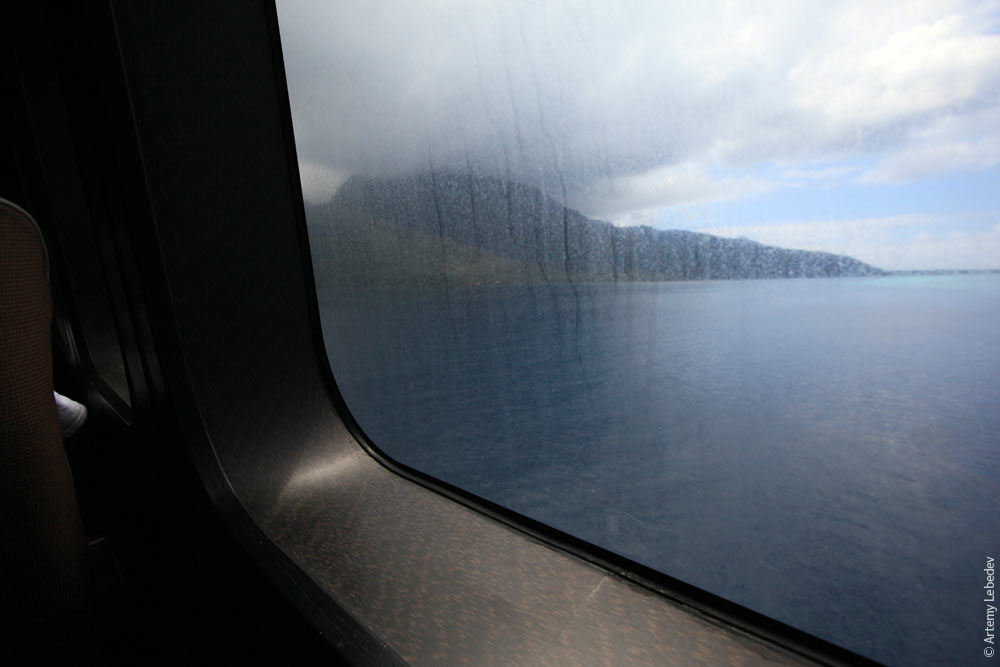 Многие приплывают сюда покупаться. Many take the ferry here to go swimming. 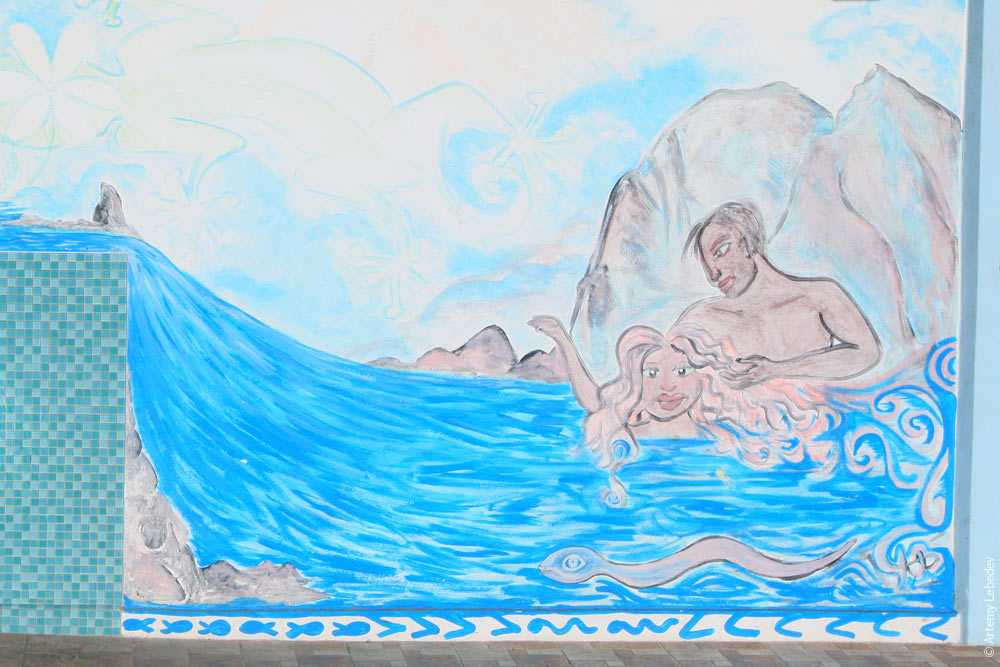 Многие купаются. Many people swim.  Или катаются на типичных полинезийских лодках. Or paddle around in traditional Polynesian boats. 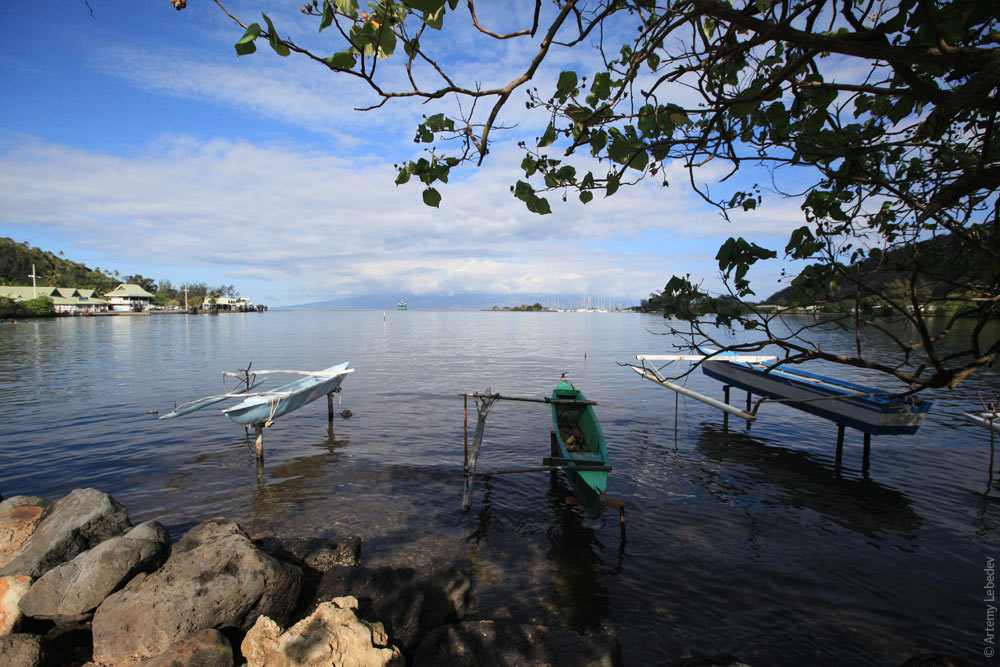 Или сидят в бунгало под соломенными крышами с видом на воду. Or sit in bungalows with straw roofs, looking out on the water. 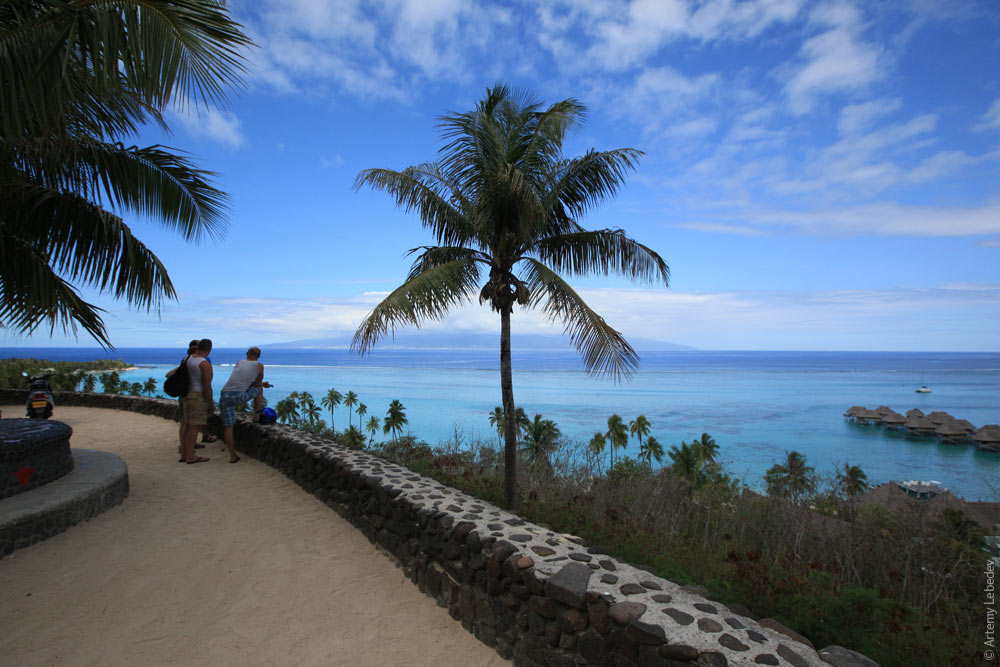 Любопытно смотрится гидрант в двух метрах от океана. Типа, если будет пожар, нельзя соленой водой, что ли, потушить будет? The fire hydrant located two meters away from the ocean is amusing. What, they can’t use the salt water if they need to put out a fire? 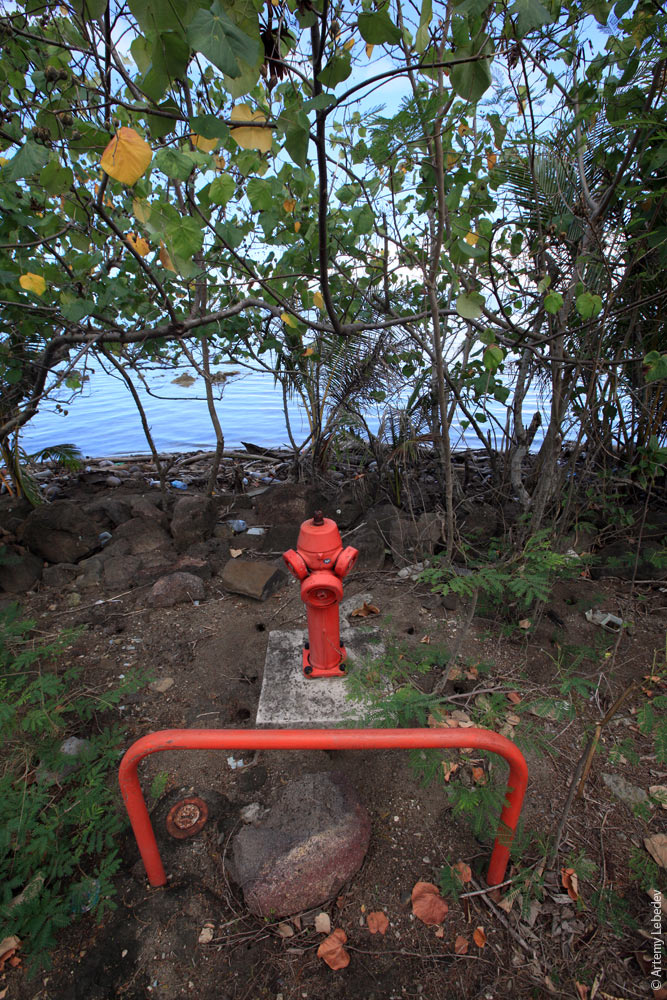 В одном месте нарисовали велодорожку. There’s a bike path on one of the roads. 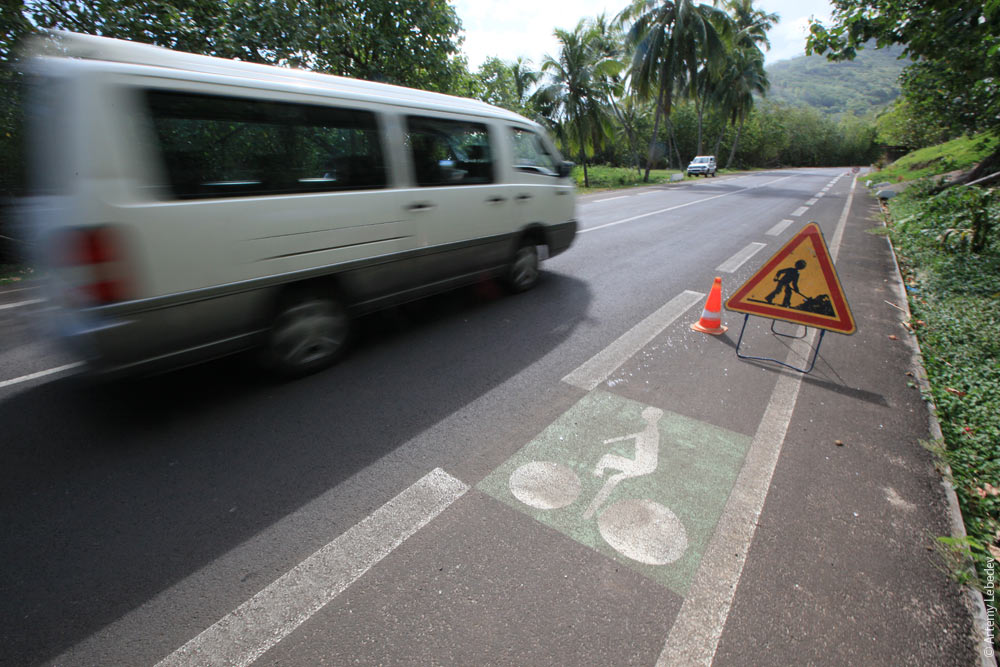 Знак сообщает о количестве погибших и раненых. A sign informs you how many people died and were injured this year. 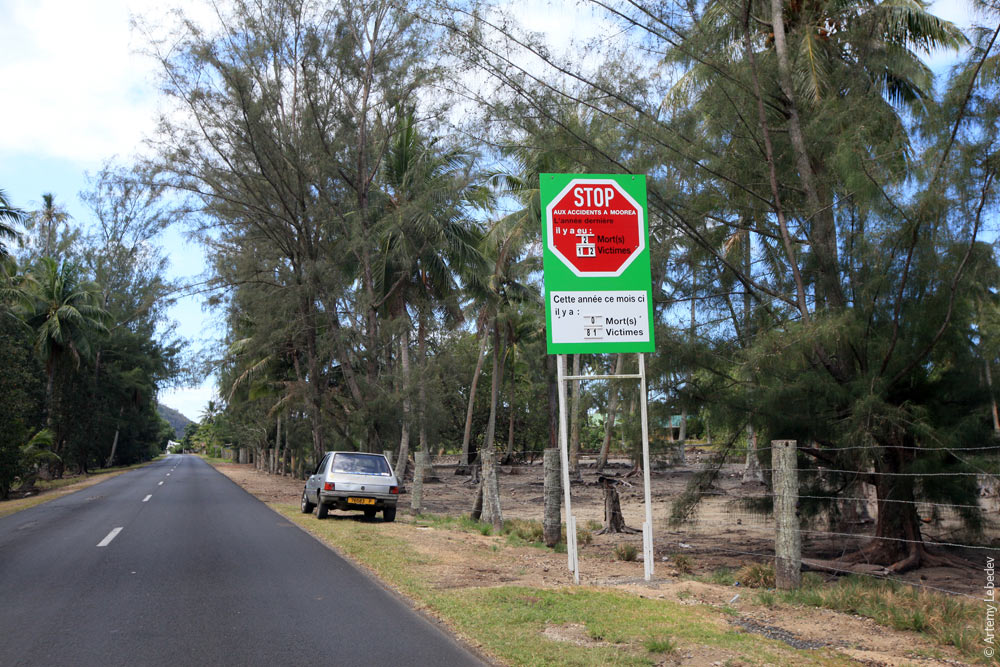 По острову расставлены бетонные знаки в форме острова. К сожалению, на них не догадались изобразить, в каком месте данный знак установлен. Concrete signs in the shape of the island can be found all around the island. Too bad no one thought of putting a “You Are Here” indicator on each of them. 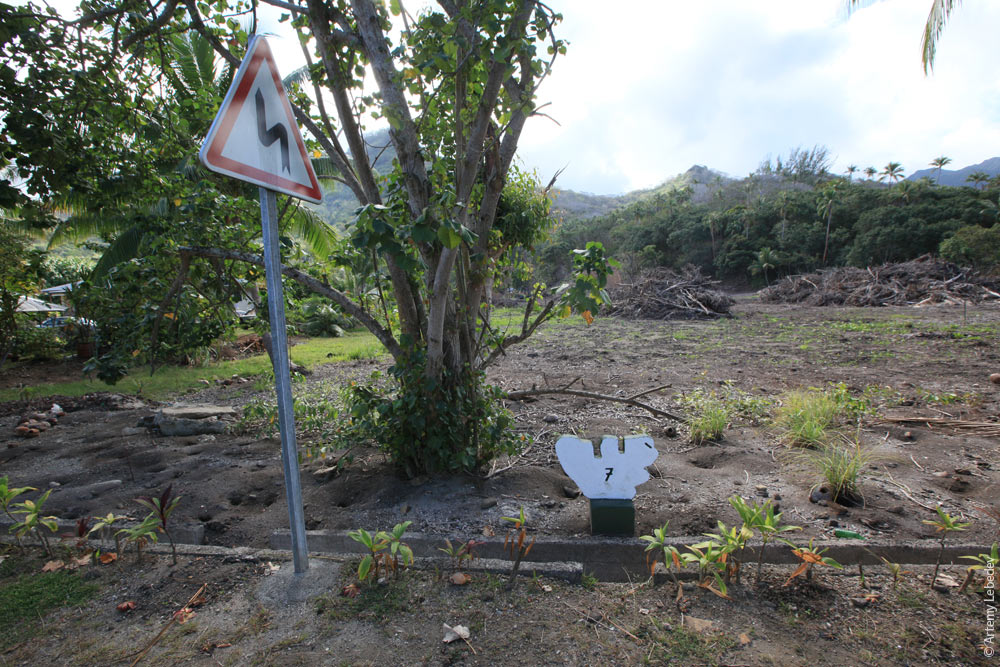 Яйца в упаковке по два и три десятка продаются замотанными в пленку. Eggs are sold in packs of 20 or 30, wrapped in cellophane. 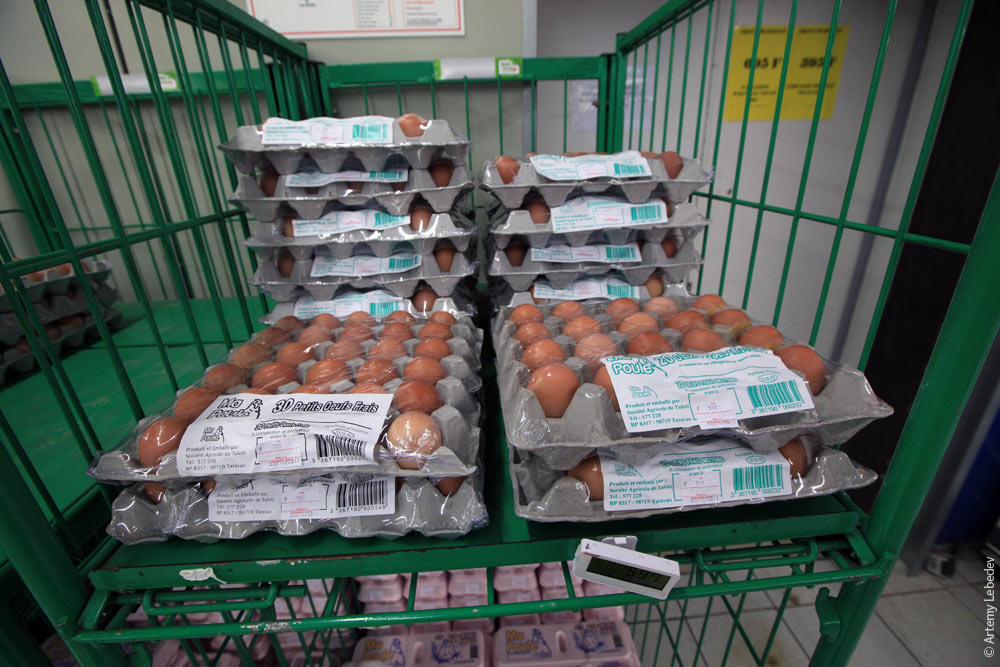 Овощи подписывают прямо на кожуре. Vegetable prices are marked right on their skin. 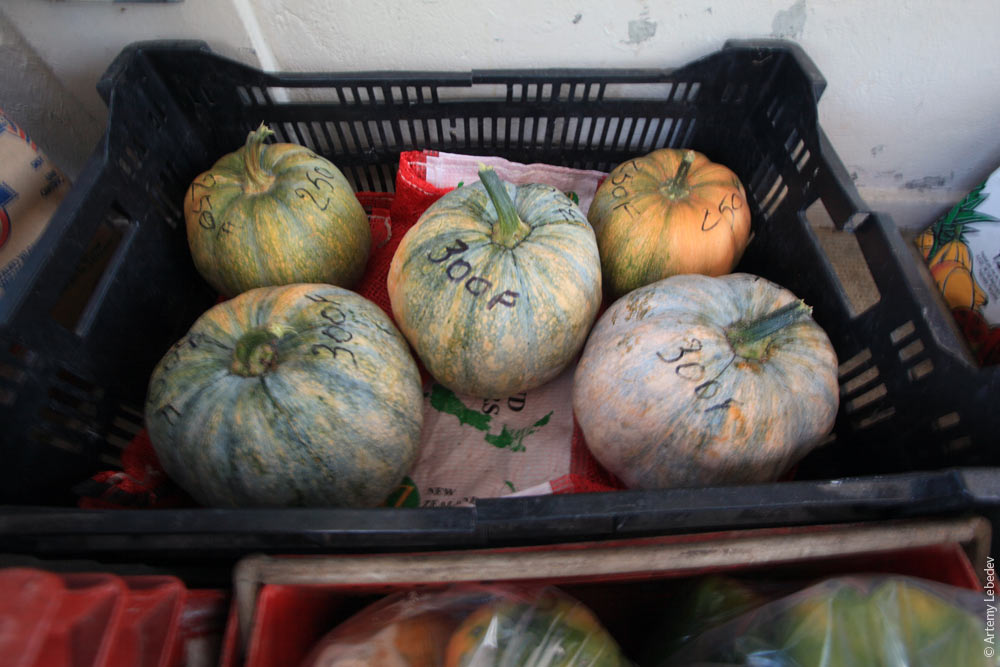 На острове ничего интересного нет. There’s nothing interesting on the island. 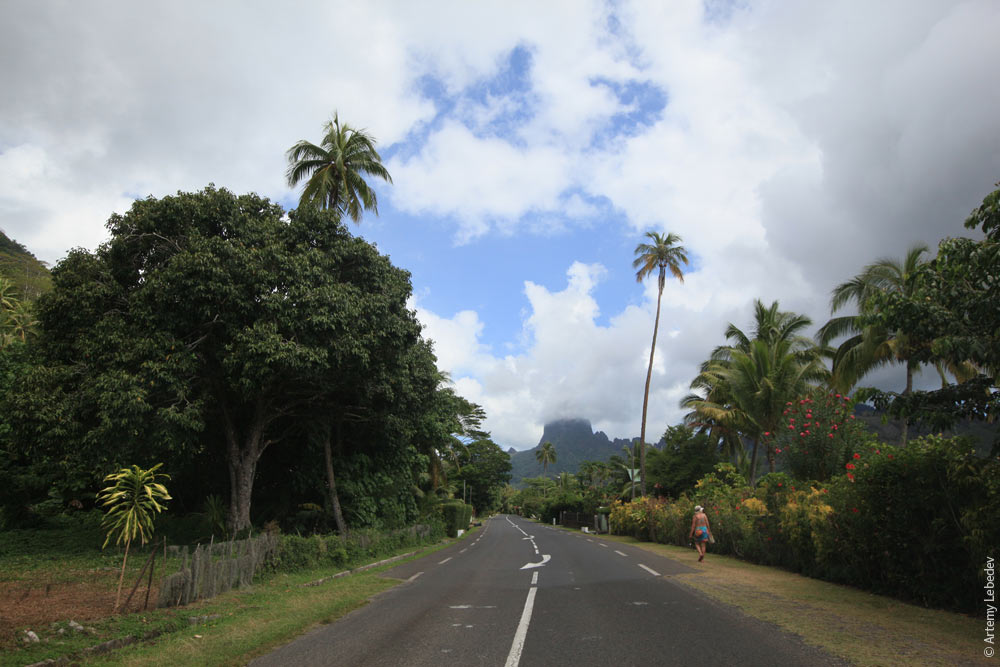 Ну кроме шкафов с электросчетчиками, стоящих у дороги перед каждым домом. Хотя ради них одних сюда ездить не стоит. Well, except for the boxes with electricity meters standing by the road outside each house. But it’s really not worth coming here just for them. 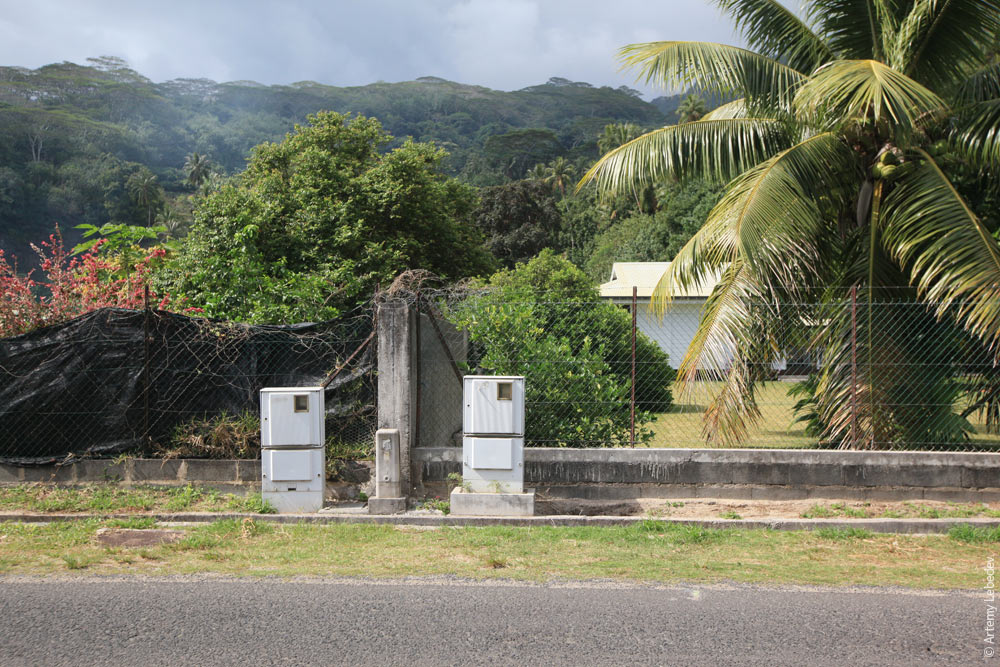 Какой-то атолл по дорогеSome Atoll on the WayНикогда раньше не видел живых атоллов. Удивительная вещь — атолл это такой остров-бублик, толщиной несколько десятков метров. I’d never seen a real live atoll before. They’re pretty amazing: doughnut-shaped islands that are only a couple of dozen meters thick. 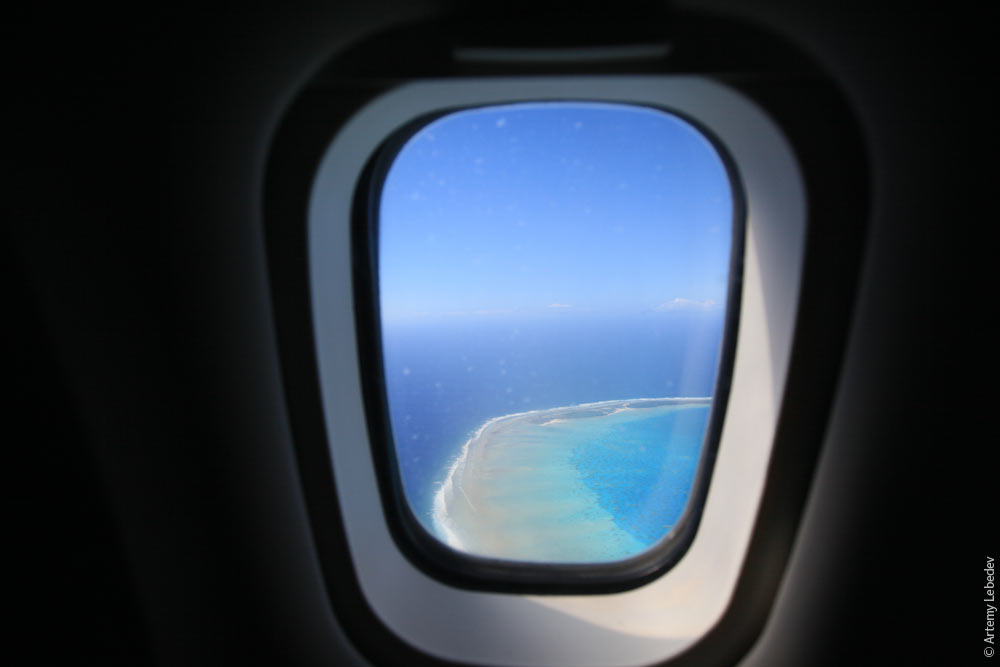 Самолет присаживается тут дозаправиться на пути к Мангареве. The plane lands here to fuel up on the way to Mangareva. 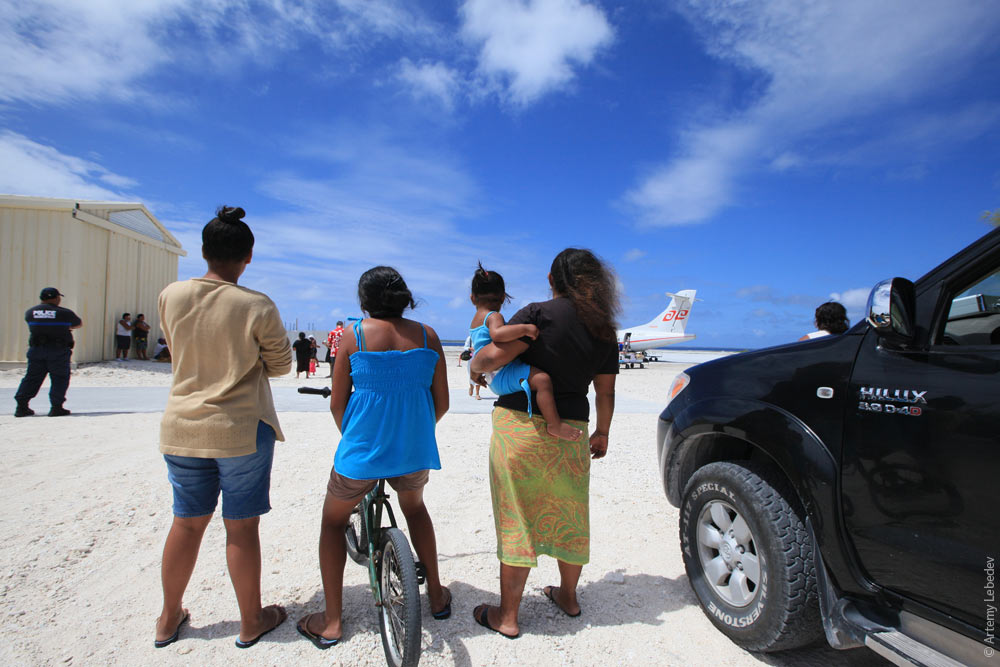 МангареваMangarevaНа карте мира MapТакая деревня на отшибе Французской Полинезии. Багаж в аэропорту выносят и кладут на специальный наклонный деревянный двухэтажный стол. A backwater village on the outskirts of French Polynesia. Passengers’ luggage is carried into the airport and placed on a special two-tier slanted wooden table. 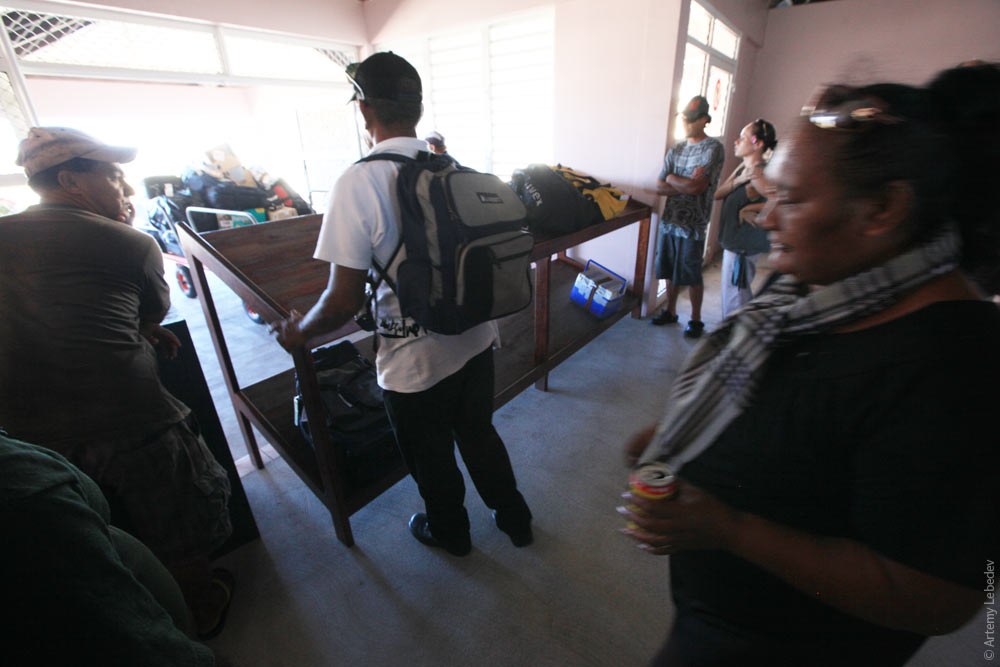 Собака дремлет в телефонной будке. A dog sleeps inside a phone booth. 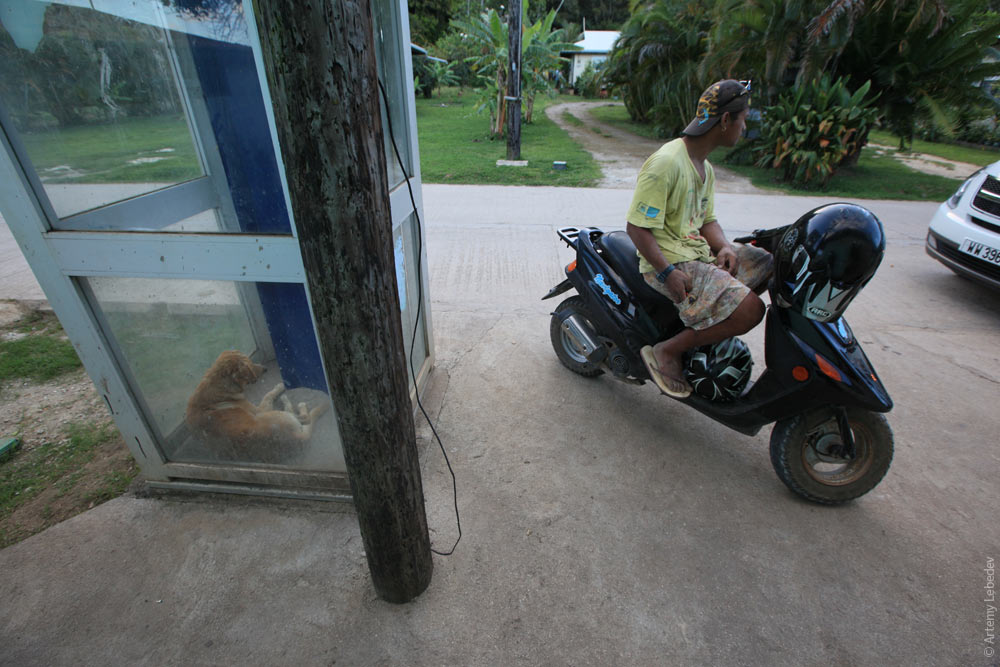 Школьники спешат домой со свежими французскими булками. Schoolchildren rush home with fresh-baked French baguettes. 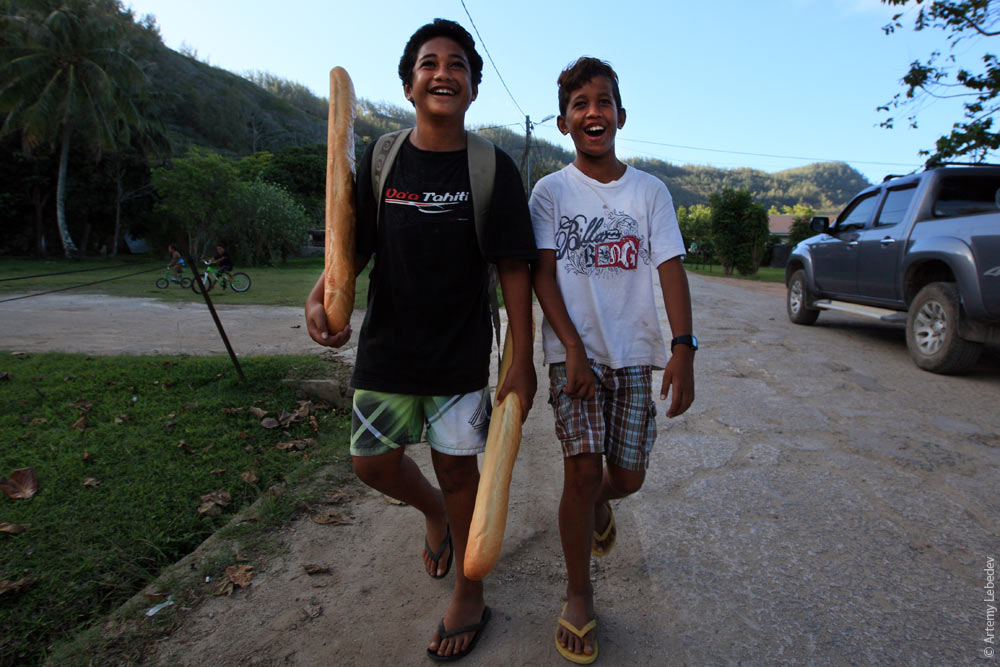 На якоре стоит товарно-пассажирская посудина «Клеймор II», которая должна доставить меня на остров Питкэрн. Ничто другое на свете не заставило бы меня оказаться тут. This is where I’m supposed to board the MV Claymore II, which will take me to Pitcairn Island. There’s no earthly reason I would end up here otherwise. 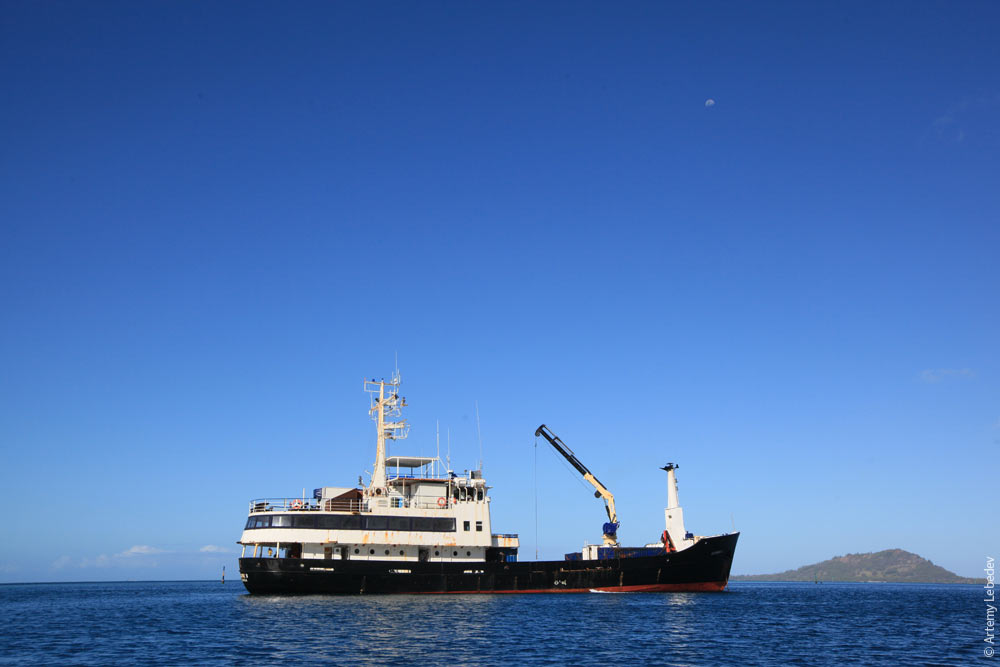 Для пассажиров на корабле каюты без иллюминаторов и вентиляции. В распоряжении пассажиров полотенце, которое не стирали со времен закладки судна на верфи. Оно пахнет так, что если им вытереться, то потом не отмыться никогда и ничем. Билет на «Клеймор II» в оба конца стоит примерно четыре тысячи долларов. The ship’s passenger cabins have no portholes or ventilation. Each passenger is provided with a towel which looks like it hasn’t been washed since the ship’s maiden voyage. The smell coming from the towel is so bad that, were you to use it, no amount of soap would be able to wash it off ever again. A round-trip voyage aboard the Claymore II costs approximately four thousand dollars. |